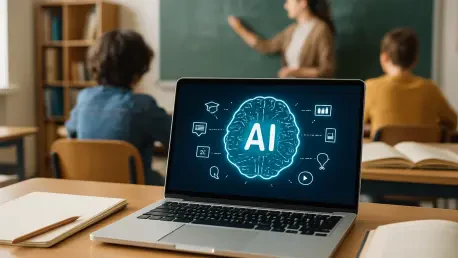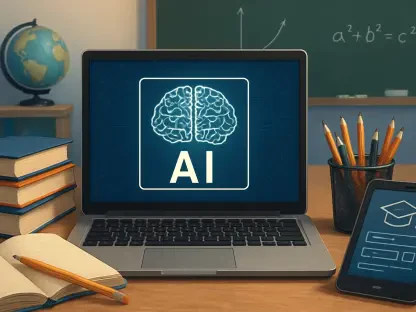In an era where generative artificial intelligence tools such as ChatGPT, Gemini, and Copilot are transforming the educational landscape, students are stepping into uncharted territory with a mix of excitement and caution. A comprehensive study conducted by the Queensland Department of Education in partnership with the UQ Learning Lab, involving over 700 students from three high schools in Queensland, Australia, offers critical insights into how teenagers are engaging with AI in their academic lives. Spanning data collected in recent years, this research highlights a notable shift from mere curiosity to purposeful use of AI for learning support. Beyond usage patterns, the findings reveal a strong student desire for teacher involvement—not as enforcers, but as partners in navigating this technology. As AI becomes embedded in classrooms, understanding student perspectives on its application and ethical boundaries is essential. This exploration delves into how students are leveraging AI, their views on responsible use, and the specific ways they hope educators will guide them through this digital evolution.
Exploring Student Engagement with AI Tools
The adoption of AI tools among students has surged, moving beyond a passing trend to become a fundamental part of their academic toolkit. Research indicates that nearly half of the surveyed students apply AI across multiple subjects, including English, Science, and Math, with usage rates climbing significantly in recent years. The primary appeal lies in AI’s ability to simplify challenging concepts, with 69% of students relying on it for explanations, while 67% use it to brainstorm ideas. This isn’t about cutting corners; rather, it’s about scaffolding learning in ways traditional methods sometimes can’t match. A Year 11 student captured this sentiment, noting how AI breaks down complex ideas into digestible formats that complement classroom instruction. This trend underscores a growing recognition of AI as a personalized learning aid, filling gaps where time or resources might be limited, and reshaping how students approach their studies.
Gender differences and subject diversity further illuminate how AI is being integrated into education. Female students, in particular, demonstrate a wider application of AI across the curriculum compared to their peers, suggesting varied learning needs and approaches. Beyond just core subjects, AI supports tasks like grammar refinement and research assistance, with 49% of students citing its help in polishing written work. This versatility highlights AI’s role as more than a niche tool—it’s becoming a cross-disciplinary ally. Importantly, students aren’t replacing traditional learning with AI but enhancing it, often turning to these tools when seeking clarity that isn’t immediately available through other means. This purposeful engagement signals a maturing relationship with technology, where students view AI as a partner in overcoming academic hurdles rather than a shortcut to bypass effort or critical thinking.
Navigating the Ethical Landscape of AI Use
When it comes to the ethics of using AI in education, student opinions reflect a spectrum of thought rather than a uniform stance. Only between 24% and 34% of those surveyed consider AI use as cheating, with younger students in Years 7 and 8 more inclined to see it as dishonest compared to older peers who often view it as a legitimate resource. This age-based divergence suggests that developmental stages influence perceptions of academic integrity, with juniors holding stricter views on technology’s role. However, across all year levels, there’s a near-universal consensus that directly copying AI-generated content without attribution crosses an ethical line. This distinction reveals a thoughtful approach, where students are beginning to grapple with the nuances of technology’s place in learning and the importance of maintaining honesty in their work.
Beyond outright plagiarism, students largely endorse AI for supportive functions like generating feedback or sparking creativity, with 67% finding it acceptable for ideation. This balanced perspective indicates a growing sophistication in how AI is perceived—not as a crutch, but as a tool requiring discernment. Senior students, in particular, exhibit a pragmatic outlook, often valuing AI for its efficiency in tackling complex tasks while still acknowledging the need for personal input. The ethical debate isn’t just about right or wrong; it’s about defining boundaries that allow technology to enhance learning without undermining integrity. As these tools become more ingrained in education, fostering discussions around responsible use becomes critical, especially to address the varying maturity levels and ethical frameworks that shape student attitudes toward AI.
Defining the Role of Teachers in AI Integration
A resounding theme from the research is students’ call for teachers to act as guides in the AI journey, providing structure and support rather than judgment. Students express a clear need for explicit guidelines on what constitutes acceptable versus unacceptable use of AI in academic settings. They want practical demonstrations of how AI can aid learning, such as using it to break down concepts or refine ideas, without fear of being accused of misconduct. A Year 12 student emphasized this, suggesting educators should highlight both AI’s potential and its pitfalls, like the need for fact-checking due to frequent errors. This feedback points to a desire for a collaborative dynamic where teachers foster curiosity about AI while instilling a sense of responsibility, ensuring students feel empowered rather than policed in their exploration of these tools.
Frustration over miscommunication also surfaces in student responses, with many resenting unfounded accusations of AI misuse over trivial matters like formatting quirks. A Year 10 student voiced annoyance at being suspected without evidence, underscoring the need for trust as a foundation for dialogue. Students aren’t asking for a free pass; they’re seeking a non-punitive environment where experimentation with AI is met with understanding and constructive feedback. This highlights a broader expectation for transparency—students want teachers to openly share how they themselves use AI in lesson planning or grading. By modeling responsible engagement, educators can bridge the gap between skepticism and acceptance, creating a classroom culture where technology is a shared asset rather than a point of contention, ultimately aligning teaching practices with the realities of a tech-driven world.
Fostering a Partnership Through Professional Development
The integration of AI in education isn’t solely a student concern; it demands that teachers evolve alongside their pupils, embracing a co-learning mindset. Professional learning communities (PLCs) have emerged as a vital mechanism in the studied schools, offering educators a space to build confidence with AI tools through experimentation and peer collaboration. These communities encourage teachers to share strategies for incorporating AI into lessons, reflect on ethical challenges, and adapt to the rapid pace of technological change. The emphasis here is on mutual growth—teachers aren’t expected to be all-knowing experts but rather active learners who can relate to student experiences. This approach helps dismantle the traditional hierarchy, positioning educators as facilitators who navigate AI’s complexities in tandem with their classes, fostering a sense of shared discovery.
Redesigning assessments to align with AI-enhanced learning represents another critical focus for these professional groups. As students increasingly rely on AI for tasks like idea generation, traditional evaluation methods may no longer suffice, necessitating innovative approaches that account for technology’s role. PLCs provide a forum for brainstorming such adaptations, ensuring assessments measure genuine understanding rather than just output. Additionally, embedding AI instruction across subjects becomes a priority, as teachers recognize the need to equip students with skills for responsible use beyond isolated lessons. This collaborative framework not only boosts educator capability but also lays the groundwork for school-wide strategies, ensuring that AI’s integration is consistent, ethical, and supportive of both teaching and learning goals in an ever-evolving educational landscape.
Envisioning a Tech-Forward Educational Future
Looking to the horizon, the trajectory of AI in education points toward deeper integration, driven by students’ shift from exploratory to utilitarian engagement. The efficiency of AI in clarifying concepts and accelerating research—often surpassing conventional tools like search engines—positions it as an indispensable part of modern learning. Students’ nuanced grasp of ethical boundaries, coupled with their plea for teacher guidance, suggests a readiness to harness AI responsibly if provided with the right framework. This isn’t about technology replacing education’s human element; it’s about enhancing it through a partnership model where trust and clarity pave the way. As schools move forward, scaling professional development from PLCs to comprehensive, institution-wide initiatives will be crucial to equip all educators with the skills needed to meet student expectations.
Reflecting on the insights gained, it’s evident that the path ahead hinges on actionable steps to solidify this student-teacher collaboration. Schools must prioritize creating clear policies on AI use, ensuring they are communicated effectively to avoid misunderstandings. Offering workshops that showcase practical AI applications in learning can demystify the technology for both parties, while ongoing dialogue can address concerns and build mutual respect. Encouraging transparency, such as teachers disclosing their own AI usage, can further normalize its role in education. As these efforts unfold over the coming years, the focus should remain on adaptability—ensuring that both students and educators are prepared to evolve with AI advancements, balancing innovation with integrity to shape a future where technology amplifies learning potential.









